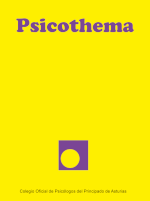Abstract
Background: The use of positively worded items and reversed forms aims to reduce response bias and is a commonly used practice nowadays. The main goal of this research is to analyze the psychometric implications of the use of positive and reversed items in measurement instruments. Method: A sample of 374 participants was tested aged between 18 and 73 (M=33.98; SD=14.12), 62.60% were women. A repeated measures design was used, evaluating the participants with positive, reversed, and combined forms of a self-efficacy test. Results: When combinations of positive and reversed items are used in the same test the reliability of the test is flawed and the unidimensionality of the test is jeopardized by secondary sources of variance. In addition, the variance of the scores is reduced, and the means differ significantly from those in tests in which all items are either positive or reversed, but not combined. Conclusions: The results of this study present a trade-off between a potential acquiescence bias when items are positively worded and a potential different understanding when combining regular and reversed items in the same test. The specialized literature recommends combining regular and reversed items for controlling for response style bias, but these results caution researchers in using them as well after accounting for the potential effect of linguistic skills and the findings presented in this study.Downloads
Download data is not yet available.
